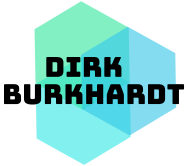Shahrukh Badar defended his Master Thesis on Process Mining for Workflow-Driven Assistance in Visual Trend Analytics
In his thesis, Shahrukh Badar created process-driven assistance that is applied to the visual trend analytics domain. The goal was, based on previous users interactions and solved tasks, to assist further users in their work. Therefore, a universal visual assistance model was defined and acts also as the main contribution, based on defined interaction event taxonomy. This concept was applied to the Visual Trend Analytics domain on the SciTics reference system. This “SciTics – Science Analytics” is connected with different data sources and provides analysis of scientific documents. The interaction model provides assistance in terms of recommendations, where the user has an option either to apply a recommendation or ignore it. The solution provided in this thesis is model-based and utilizes the potential of Process Mining and Discovery techniques. It is started by creating an event taxonomy by identifying all possible ways of user interactions on the “SciTic – Visual Trend Analytics” web application. Next, enable the “SciTic – Visual Trend Analytics” web application to start logging events chronologically based on predefined taxonomy. Later, these events log is converted into Process Mining log format. Next, it applies the Process Discovery algorithm “Heuristics Miner” on these log data to generate a process model, which shows the overall flow of user interaction along with the frequencies. Later, this process model is used to provide users with recommendations.
The post Shahrukh Badar defended his Master Thesis on Process Mining for Workflow-Driven Assistance in Visual Trend Analytics appeared first on Human-Computer Interaction & Visual Analyitics Reasearch Group (vis) at Darmstadt University of Applied Sciences (h_da).



 pixabay
pixabay